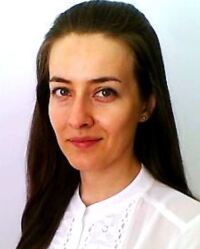Haiman Group
Black hole astrophysics and cosmology
Over the past decades, it has become clear that most galaxies have a massive black hole in their nucleus, with masses ranging from a million to a billion solar masses. The energetic radiation and material jets emanating from these black holes play a significant role in sculpting galaxies over cosmic time, but their origin remains unknown. Observations have shown that these massive black holes already existed in early times, when the universe was less than a billion years old, i.e. they possibly pre-date galaxies.
We also know that galaxies are built up over cosmic time by a series of mergers, from small early protogalaxies with perhaps a million solar masses to present-day galaxies as large as tens of trillions of solar masses. Massive black holes in galactic nuclei are naturally expected to merge and to produce copious gravitational waves in the process. These early massive black hole mergers are the prime targets for forthcoming space-based low-frequency gravitational wave detectors, such as the European Space Agency’s Laser Interferometer Space Antenna (LISA), planned for launch in the 2030s.
Galaxies and their black holes form and evolve in an expanding background universe, whose expansion has recently sped up. This overall cosmic acceleration can be attributed to a hitherto unidentified component of our universe (dubbed “dark energy”), to a finite energy density of the quantum vacuum, or else to our lack of understanding of gravitation deviating from Einstein’s theory on cosmic scales. These different explanations cause subtle differences in how the average universe has evolved over time for the past several billion years, as well as the types of structures that formed and the speed at which these structures grew nonlinear. These differences can be revealed statistically through gravitational lensing, an effect of general relativity, which distorts the apparent shapes of galaxies—so-called weak gravitational lensing.
Zoltan Haiman’s group investigates questions related to the above phenomena through semi-analytic approaches, numerical simulations, and interpreting observations. How and when did the first objects (including stars and black holes) form in the universe, and what impact did they have on the rest of the universe? Are mergers a major contributor to the growth of black holes, and how do such mergers unfold in galactic nuclei in the presence of stars and gas? How can we use observations of both gravitational waves and electromagnetic radiation in tandem to answer these questions? Finally, while weak lensing is a promising cosmological tool, its full potential is yet to be realized. Haiman’s group has been developing new statistical approaches, including through machine learning, to utilize lensing data from large forthcoming surveys that will include measurements of the shapes of up to billions of galaxies.
Open Positions
Prospective PhD students: please apply through https://phd.pages.ista.ac.at
Prospective postdoctoral fellows: please see the positions advertised here
Current Projects
- Clarifying the conditions for rapid formation and growth of massive ‘seed’ black holes in the early universe
- Developing observational diagnostics of massive black hole formation pathways
- Modeling the mergers of black holes with circumbinary gas: assessing the impact of gas on the black holes’ orbital evolution and their gravitational wave emission
- Developing characteristic electromagnetic spectral and time-domain signatures of accreting binary (as opposed to single) black holes
- Modeling the population of stellar-mass objects embedded in the gaseous accretion disks of active galactic nuclei
- Developing new statistics for weak lensing cosmology, including through machine learning
- Mitigating systematic errors in weak lensing cosmology
Publications
ReX-Link: Zoltan Haiman
Career
2022 – 2024 Professor, Department of Physics, Columbia University, USA
2013 – 2024 Professor, Department of Astronomy, Columbia University, USA
2008 – 2013 Associate Professor, Department of Astronomy, Columbia University, USA
2002 – 2007 Assistant Professor, Department of Astronomy, Columbia University, USA
1999 – 2002 Hubble Fellow, Department of Astrophysics, Princeton University, USA
1998 PhD, Astronomy Department, Harvard University, USA
1995 Certificate of Postgraduate Study, Institute of Astronomy, Cambridge University, UK
1993 BS in Physics, MIT, USA
1993 BS in Electrical Engineering, MIT, USA
Selected Distinctions
2016 Simons Fellowship in Theoretical Physics (Simons Foundation)
2010 Blavatnik Award for Young Scientists (New York Academy of Sciences)
2004 New York City Mayor’s Award for Excellence in Science and Technology (finalist)
2002 Brilliant 10, Popular Science Magazine (top 10 young US scientists)
1997 – 1998 Merit Fellowship, Harvard University, USA
1994 – 1995 Isaac Newton Studentship, Cambridge University, UK
1994 – 1995 Cambridge European Trust Overseas Research Scholarship
1993 Sigma Pi Sigma, Phi Beta Kappa, and Eta Kappa Nu Honor Societies, MIT, USA




